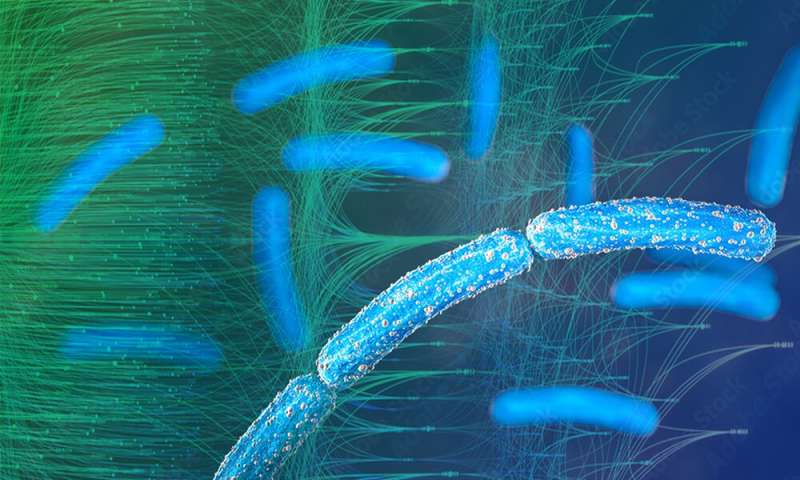Credit: Karen Arnott/EMBL-EBIA
The ways bacteria infect cells are important for understanding host-pathogen interactions. The knowledge also opens up a world of practical applications.
For example, it can support the design of new antibacterial agents or vaccines. In the case of soil or marine bacteria, it can create strategies to rebalance natural ecosystems.
“I’ve always been fascinated with bacteria and how these tiny microbes have such a huge impact on us and our world,” said Vivian Monzon, Ph.D. student in the Bateman group at EMBL-EBI. “I’m particularly interested in the gist of how bacteria infect cells.”
In her recent work, Monzon has used machine learning to investigate how bacteria interact with their environment. By analyzing data from the UniProt database and using AlphaFold, she tries to fill the gaps in our knowledge in this area.
Binding – the first step of the interaction
Fibrillar adhesins are proteins located on the bacterial cell surface that mediate interactions with the environment, for example with host cells or other bacteria. These proteins usually have a stalk, which allows them to cross the bacterial cell surface and project closer to their target, no matter what they try to bind to. Fibrillar adhesins are essential for bacteria-host interactions, but they also evolve rapidly, making them difficult to study.
“As is often the case with computational experiments, one of the challenges has been identifying a relevant dataset from the wealth of available data,” explains Monzon. “We decided to look at two types of bacteria. The first are Firmicutes species — some of the best-studied bacteria out there; they can live in the human gut and play a role in keeping the colon healthy. The second were Actinobacteria species, which are widespread in terrestrial and aquatic ecosystems.
“Excitingly, our analysis yielded more than 6,500 fibrillar adhesins, many of which had never been seen before. This shows that there is so much we still don’t know about the binding process, which is so essential in the bacterial world.”
Beyond scientific curiosity
The work goes beyond mere curiosity. By understanding how bacteria interact with biotic or abiotic surfaces, researchers can begin to explore how drugs can be used to address these interactions, or whether the bacteria that live in our bodies or environment can be changed. This approach could allow researchers to improve the health of the gut microbiome — the bacterial community that lives in a patient’s gut. This information goes beyond healthcare and can help restore a marine or soil microbiome to its original state after being disrupted by pollution or other agents.
Work like Monzon’s is helping researchers fill in the gaps in their understanding of the fascinating world of bacteria.
As part of its new cross-cutting theme of microbial ecosystems, EMBL is interested in pioneering ways to tap into the vast microbial diversity of the world and understand the underlying molecular mechanisms behind how microbes interact with their host, other microbes and their environment.
Likewise, this kind of close-up of bacterial interactions is essential for infection biology, helping researchers map the molecular mechanisms that help pathogens find, invade, and then survive and multiply in host cells. Despite decades of research, the mechanisms of pathogen adhesion remain elusive. As part of the cross-cutting theme of infection biology, EMBL aims to use advanced technologies to systematically map and model the host-pathogen interfaces at the atomic, molecular and tissue level. This could enrich scientists’ understanding of infectious processes and how to stop or slow them down.
Monzon’s project is just one of many EMBL initiatives investigating the molecular mechanisms of bacteria. Anyone working on bacterial suture structures can find Monzon’s paper’s AlphaFold structure model, as well as the random forest prediction results, in the University of Cambridge’s institutional repository.
How bacteria attach to cells: basis for the development of a new class of antibiotics
Vivian Monzon et al, large-scale discovery of microbial fibrillar adhesins and identification of new members of adhesive domain families, Journal of Bacteriology (2022). DOI: 10.1128/jb.00107-22
Quote: Shining light on how bacteria interact (2022, August 1), retrieved August 1, 2022 from https://phys.org/news/2022-08-bacteria-interact.html
This document is copyrighted. Other than fair dealing for personal study or research, nothing may be reproduced without written permission. The content is provided for informational purposes only.

